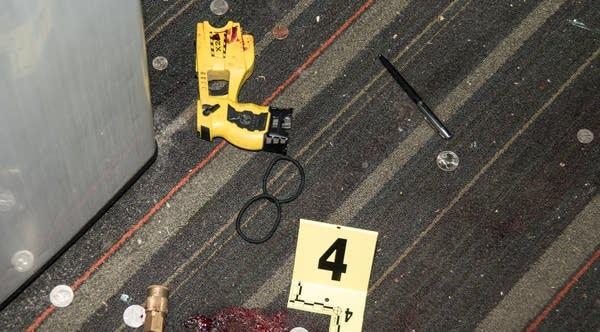Table of Contents
- Common Indicators of Stun Gun Malfunction and What They Mean
- Diagnosing Electrical Output Issues and Ensuring Device Safety
- Routine Maintenance Tips to Prevent Stun Gun Failures
- Expert Recommendations for Repair and Replacement Decisions
- Closing Remarks
Common Indicators of Stun Gun Malfunction and What They Mean
When a stun gun isn’t functioning properly, there are several clear signals that indicate something is off. One of the most common signs is a lack of visible spark or arc between the electrodes when the device is activated. This usually means the battery is weak or there is internal damage preventing it from generating the necessary electrical charge. Another indicator is an intermittent sound or unusual popping noises during use, which can suggest faulty wiring or a compromised capacitor inside the unit. Users should also be aware of rapid battery drain or unexpected shutdowns during operation, as these point toward either degraded battery health or internal circuitry issues.
It’s equally important to watch out for physical signs, such as the stun gun getting unusually hot or exhibiting a burning smell – both clear warnings of potential electrical failure that require immediate attention. Additionally, malfunctioning stun guns might show non-responsive buttons or trigger mechanisms, meaning the controls no longer engage the electric discharge as intended. Identifying these symptoms early can prevent a dangerous situation where the device fails under stress, ensuring your personal safety equipment stays reliable when you need it most.
Diagnosing Electrical Output Issues and Ensuring Device Safety
When troubleshooting a stun gun, start by verifying its electrical output with care. An inconsistent or weak shock can signal internal damage or battery issues. Use a tester designed specifically for stun devices or a multimeter to measure output voltage safely. Always ensure the device is powered off before connecting any testing tools to avoid the risk of accidental discharge. Additionally, check for any visible damage such as cracked casing, corrosion around the cartridge, or frayed wires, as these physical defects often impede proper electrical function.
To maintain safety and functionality, regularly inspect and clean all contact points; dirt buildup can reduce the stun gun’s effectiveness. Follow these key practices:
- Replace batteries on schedule to prevent weak output currents.
- Store the device in a cool, dry place away from moisture.
- Avoid overusing the stun gun in one session, as overheating can harm internal circuits.
- Consult a professional if performance drops despite proper care, since internal electrical faults require expert repair.
Routine Maintenance Tips to Prevent Stun Gun Failures
Ensuring your stun gun operates reliably starts with a diligent maintenance routine. Regularly inspecting the battery is paramount – replace it immediately if you notice any signs of corrosion or diminished power. Keep the contacts clean by gently wiping them with a dry cloth or cotton swab to prevent dirt and moisture buildup, which can impede electrical flow. Additionally, store your device in a cool, dry place away from direct sunlight to prevent internal component degradation.
Incorporate these simple habits into your maintenance schedule:
- Monthly functionality tests, keeping safety precautions in mind.
- Visual check for cracks or damage on the outer casing.
- Ensuring activation buttons respond without sticking or delay.
- Replacing batteries at recommended intervals, even if the device seems to hold charge.
By following these steps consistently, you minimize the risk of unexpected failures and extend the operational lifespan of your stun gun, maintaining peace of mind and confidence in your personal safety device.
Expert Recommendations for Repair and Replacement Decisions
When deciding whether to repair or replace your stun gun, it’s essential to weigh the cost and potential effectiveness of both options carefully. If the device shows signs of reduced power output, intermittent activation, or battery issues that persist even after charging or replacement, these are clear signals that maintenance may no longer be viable. Professional diagnostics and repair services often provide a detailed assessment of internal damage and battery health, helping you avoid investing in a product that could jeopardize your safety.
Consider these expert tips when evaluating your stun gun’s condition:
- Inspect the electrodes: Corrosion, burn marks, or wear can mean replacement is necessary.
- Test the battery life: Consistently poor battery performance typically indicates a failing power cell.
- Check for firmware or electrical malfunctions: If your model supports software updates, ensure it’s running the latest version.
- Evaluate the cost-effectiveness: When repair costs approach or exceed the price of a new stun gun, replacement is usually the smarter choice.
Closing Remarks
In conclusion, staying vigilant about the condition of your stun gun is essential for ensuring it functions reliably when you need it most. By regularly inspecting for warning signs such as inconsistent shocks, unusual sounds, or physical damage, you can address potential malfunctions early and avoid unexpected failures. Remember, a well-maintained stun gun not only protects you effectively but also extends the device’s lifespan. If you ever suspect your stun gun is malfunctioning, don’t hesitate to consult the manufacturer’s guidelines or seek professional assistance. Your safety is worth the extra attention.Check Our Other Blogs
- StunGun – Your Trusted Source for Stun Guns, Laws, and Self-Defense Tips
- PepperSprayLaws – Your Trusted Resource for Pepper Spray Information
- StunGunLaws – Your Trusted Guide to Stun Gun Legality and Safety





